- HOW TO DO
- 1 likes
- 11043 views
- 0 comments

What is a residual current circuit breaker
A residual current circuit breaker (IMD) is an electrical protection device that acts as a fuse and a circuit breaker at the same time. It is one of the fundamental components of the electrical panel of a house or building, as it guarantees essential electrical safety for domestic electrical systems.
The IMD is designed to interrupt the electrical supply in the event of an overload or a ground fault, thus preventing short circuits, fires and other electrical hazards. This means that the IMD plays a vital role in protecting electrical circuits and appliances, as well as protecting people from possible electric shock.
But how exactly does a differential circuit breaker work?
To understand this, you must first understand what is meant by overload and earth fault. When an electrical circuit is overloaded, it means that it is carrying more current than it was designed for. This can happen, for example, when you plug too many household appliances into the same outlet or when an electrical appliance fails and starts to require more energy.
In these cases, an excessive amount of current will flow through the circuit, risking overheating and fires.
An earth fault, on the other hand, occurs when a wire or component of the electrical system is accidentally brought into contact with a metal part of the circuit. In this case, some of the current will flow to ground through the shorted component, creating a potentially dangerous situation.
A common example of a ground fault is when handling a wet electrical outlet.
To prevent these dangers, the IMD is equipped with two types of protection: a magnetic device and a thermal device . The magnetic device is sensitive to overcurrents, while the thermal device is sensitive to high temperatures.
If the current flowing through the IMD exceeds a certain value, the magnetic device detects the overload and immediately cuts off the electrical supply. Likewise, if the surrounding temperature becomes too high, the thermal device activates, allowing the IMD to shut down and prevent fire risks.
Types of differential circuit breaker
There are two types of residual current circuit breakers: single-phase and three-phase .
The single-phase IMD is designed for a single-phase electrical circuit, so it is intended for use in homes and small electrical systems.
Three-phase , on the other hand, is intended for large industrial and commercial systems that require a greater quantity of energy.
Additionally, there are different current ratings for IMDs, which is the amount of current the IMD can handle under normal operating conditions. It is important to choose a differential circuit breaker with the correct rated current , to ensure adequate protection for your electrical system.
Functionality and importance of the differential magnetothermic switch
When it comes to electrical systems, one of the fundamental elements to guarantee safety and protection is the differential magnetothermal switch. But what exactly is it and why is it so important?
How a differential circuit breaker works
The residual current circuit breaker performs two fundamental functions : overcurrent protection and earth fault detection .
When an electrical appliance is inserted into the outlet and the circuit is closed, electrical current begins to flow through the system. If the intensity of the current exceeds the maximum allowed limit, the circuit breaker activates and interrupts the flow , thus protecting the circuit from the influx of energy which could cause fires or material damage.
Furthermore, thanks to the differential , the switch is also able to detect any earthing faults . If the fault occurs, i.e. if some of the energy discharges to the earth instead of passing through the circuit, the differential detects an alteration in the current flow and immediately cuts off the power supply. In this way, the switch protects not only the circuit, but also the people around it, avoiding the risk of electrocution.
Is it mandatory to install a differential circuit breaker?
"To be in compliance with Decree no. 37 of 2008 , every electrical system must be equipped with a differential magnetothermal switch , positioned inside the electrical panel and instead of the system itself. Furthermore, for the device to function correctly, it is It is necessary to carry out periodic maintenance checks."
Where to install the IMD
The differential magnetothermic switch must be installed at the origin of the electrical system, therefore upstream of the meter or the current distribution panel.
Furthermore, it is necessary to install one for each circuit of the system , for example one dedicated to the sockets and one for the lights. In this way, in the event of a fault or anomaly, it is possible to intervene only on the affected circuit, without interrupting the electrical power supply to the entire system.
Importance of the differential magnetothermic switch
As already mentioned, the differential magnetothermic switch is a fundamental device for the safety and protection of the electrical system.
Thanks to its dual functionality, it is able to prevent and significantly reduce the risks associated with the use of electricity and guarantee the safety of people and homes. It is therefore important that it is installed in the electrical system, but also that it is periodically checked and replaced if necessary.
Furthermore, in the case of purchasing a new home or a renovation, it is always recommended to evaluate the installation of a differential magnetothermic switch to guarantee the safety of your electrical system.
What is a residual current circuit breaker used for?
The differential magnetothermic switch is a fundamental element to guarantee the safety of electrical installations.
The main reasons why it is important to use it are:
- Overcurrent protection : the thermomagnetic switch is able to interrupt the power supply in case of overloads or short circuits, avoiding fire or electrical accidents.
- Protection against current leaks : the differential switch is able to detect even small current amplitudes and intervene immediately to avoid risks of electrocution.
- Combination of functions : thanks to the combination of the two components, the residual current circuit breaker offers total protection against electrical dangers, becoming an indispensable device for home safety.
- Ease of use : the interface of a residual current circuit breaker is very simple and intuitive to use, allowing anyone to intervene in an emergency. Furthermore, residual current circuit breakers are designed to last a long time and do not require particular maintenance, thus guaranteeing continuous and constant protection.
The use of a differential circuit breaker is essential for the safety of our domestic electrical systems. Thanks to its double protection function, this device allows us to prevent and safely manage any problems and unexpected events related to the electrical system.
Always remember to install a quality differential magnetothermal switch, following safety regulations, and to carry out periodic checks to ensure correct functioning. It's better to be safe than sorry, especially when it comes to the safety of our loved ones and our homes.

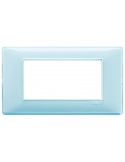

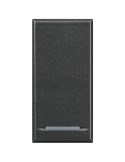
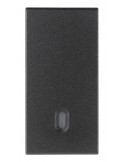
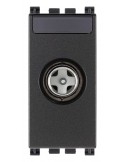
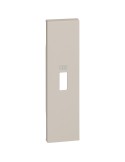

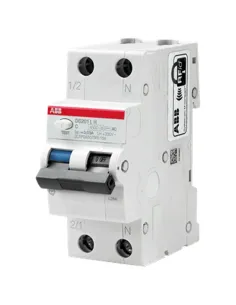


Comments (0)